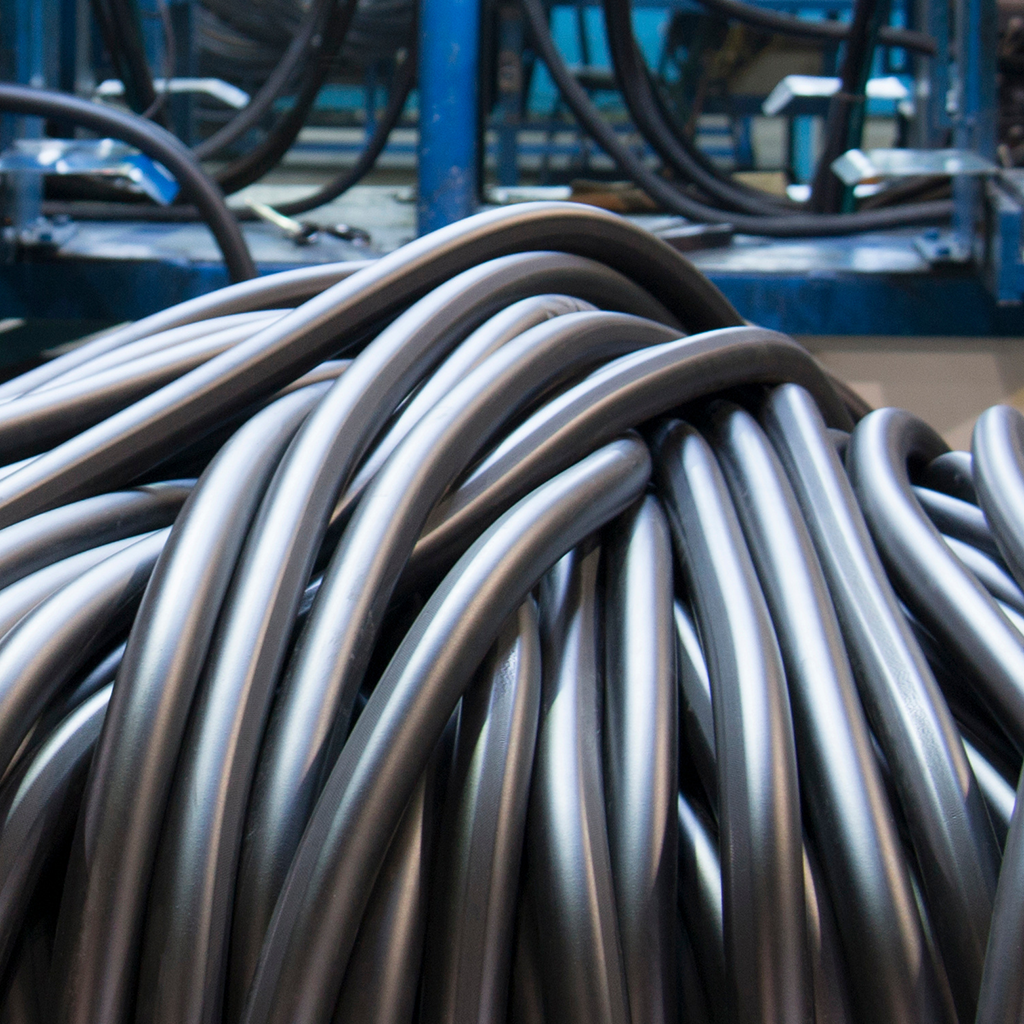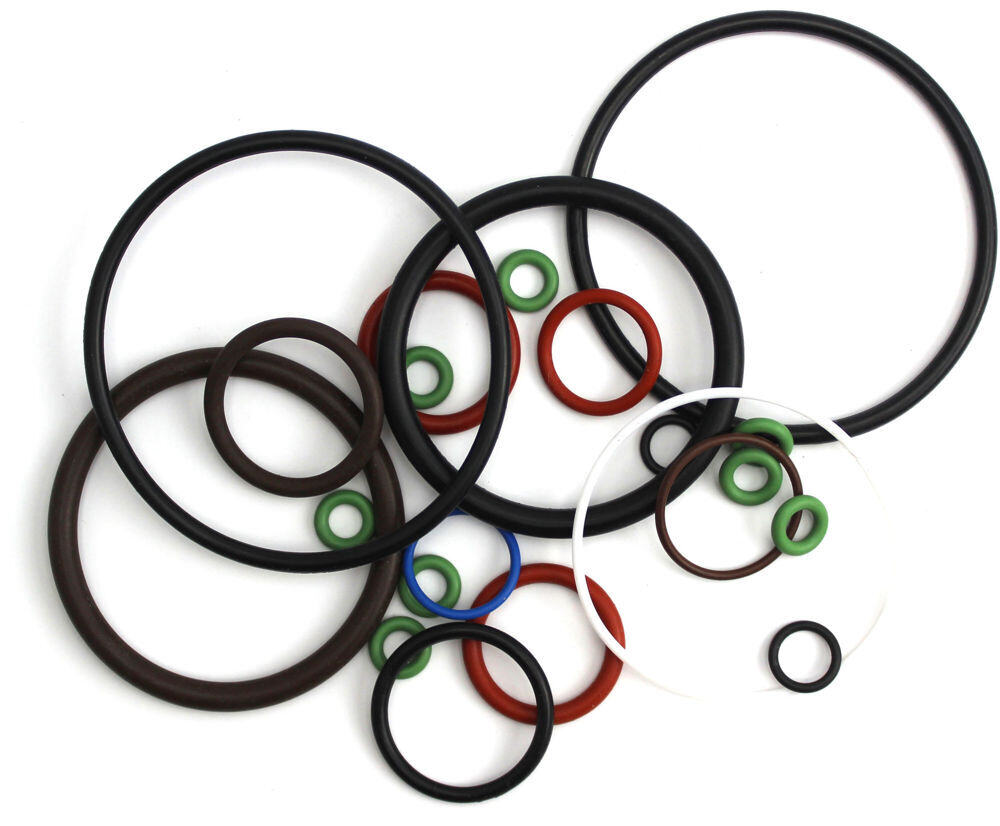The Impact of Weather on O-Rings
Environmental conditions play a crucial role in determining the effectiveness of O-rings and the elastomers that compose them. It's essential not to underestimate the importance of weather conditions, as neglecting these factors could result in premature O-ring failure and potential damage to your systems. Let's take a look at how different conditions can affect your O-rings, and what you can do to mitigate those effects.
How Does Weather Impact O-Rings?
1. Temperature
Different weather conditions, particularly temperature fluctuations, can significantly impact the performance and integrity of these essential sealing components. Here’s a detailed look at how temperature variations specifically affect O-rings.
High Temperature
High temperatures can significantly impact O-rings in several ways. Prolonged exposure to elevated temperatures can cause O-rings to harden, crack, or become brittle, particularly if they are made from materials that are not heat-resistant. Additionally, materials like rubber can expand when heated, which may lead to deformation of the O-rings and a loss of their sealing properties.
Low Temperature
Cold temperatures can make some O-ring materials stiff and brittle, leading to cracking and failure under stress. Additionally, O-rings may contract in cold conditions, which can potentially cause leakage as the seal becomes less effective.
2. Humidity and Moisture
Exposure to high humidity or direct contact with water can cause certain O-ring materials, such as natural rubber, to swell, altering their size and compromising the seal.
Swelling
When O-rings swell, they can lose their proper fit in the application, leading to potential leaks and failure in maintaining a secure seal. This is particularly problematic in environments where precise sealing is critical, such as in hydraulic systems or in automotive applications. The swelling effect is exacerbated in materials that are not inherently resistant to water absorption, making it crucial to select the appropriate material for environments with high humidity or frequent water exposure.
Moisture
Additionally, continuous exposure to moisture can accelerate the degradation of O-rings, especially those made from materials not designed to withstand wet conditions. This degradation can manifest as a loss of elasticity, surface cracking, and overall weakening of the O-ring structure. Over time, the compromised O-rings can fail to perform their sealing function effectively, leading to potential system failures and maintenance issues. Therefore, understanding the specific environmental conditions and selecting O-ring materials with high moisture resistance, such as EPDM or silicone, is essential for ensuring long-term reliability and performance in wet or humid environments.
3. UV Radiation
O-rings exposed to direct sunlight or other sources of UV radiation can experience surface cracking, hardening, and overall material degradation. This process, known as UV degradation, can significantly compromise the integrity and performance of the O-rings. Materials such as nitrile rubber are particularly susceptible to UV damage, making them less suitable for applications with high UV exposure.
Conversely, materials like silicone or fluorocarbon are more UV-resistant and can maintain their properties better under such conditions. Therefore, choosing the right material for O-rings is essential to ensure their longevity and effectiveness in environments with substantial UV exposure.
4. Ozone Exposure
Ozone in the atmosphere can cause cracks on the surface of O-rings, particularly those made from unsaturated polymers like natural rubber or nitrile. This phenomenon, known as ozone cracking, results from the reaction between ozone and the double bonds in these polymers, leading to surface degradation and the formation of cracks.
Over time, these cracks can propagate and compromise the structural integrity of the O-rings, leading to premature failure. To mitigate this risk, it is essential to select materials with better ozone resistance, such as EPDM or fluorocarbon, especially for applications where O-rings are exposed to higher concentrations of ozone.
5. Environmental Contaminants
Pollutants in the air, such as sulfur dioxide and other industrial chemicals, can interact with O-ring materials, leading to chemical degradation or changes in their physical properties. These contaminants can cause O-rings to deteriorate more quickly, losing their elasticity and becoming brittle or cracked.
The chemical reactions between the pollutants and the O-ring material can also result in swelling, shrinking, or other distortions that compromise the seal's effectiveness. To prevent such issues, it is important to choose O-ring materials that are resistant to chemical pollutants or to implement protective measures to shield the O-rings from exposure to harmful substances in the environment.
6. Material-Specific Effects on O-Rings
Nitrile
Nitrile rubber offers good resistance to oils, fuels, and hydraulic fluids, making it widely used in automotive and industrial applications. It can become brittle in cold temperatures, which may lead to cracking under stress. Nitrile is also susceptible to ozone and UV light, which can cause surface cracking and degradation over time. However, it remains a popular choice due to its cost-effectiveness and broad compatibility with many fluids.
Viton (Fluorocarbon)
Viton is known for its excellent resistance to high temperatures, ranging from -15°C to +204°C (-5°F to +400°F), and a wide variety of chemicals, including oils, fuels, acids, and solvents. While Viton exhibits exceptional high-temperature resistance, it can be affected by low temperatures, becoming less flexible and potentially losing sealing capability in extreme cold. However, its overall chemical resistance makes it suitable for demanding environments where exposure to aggressive fluids and high temperatures are prevalent.
Silicone
Silicone O-rings are highly versatile, offering outstanding performance in extreme temperatures ranging from -60°C to +230°C (-76°F to +446°F). They also exhibit good flexibility and low compression sets. Silicone has good resistance to ozone and UV light, making it suitable for outdoor applications. However, silicone can swell in certain solvents and chemicals, which may affect its sealing performance in specific environments. Its moderate mechanical properties are balanced by its wide temperature range suitability.
Ethylene Propylene (EPR or EPDM)
EPDM is valued for its excellent resistance to weathering, ozone, and UV light, along with good electrical insulation properties. EPDM performs well in outdoor applications where exposure to sunlight and weather extremes is common. However, it is not compatible with oils and fuels, limiting its use in certain industrial applications where contact with petroleum-based fluids is frequent.
PTFE (Polytetrafluoroethylene)
PTFE is chemically inert, offering exceptional resistance to chemicals, acids, and solvents, along with a broad temperature range (-200°C to +260°C, or -328°F to +500°F). PTFE is virtually unaffected by weather conditions, UV radiation, and ozone. Its low coefficient of friction and non-stick properties make it ideal for applications requiring minimal friction and resistance to aggressive chemicals. However, PTFE's low elasticity limits its use as a dynamic seal, often requiring backup O-rings or seals for effective sealing in dynamic applications.
Aflas
Aflas is a fluoroelastomer known for its excellent resistance to heat, chemicals, and steam, making it suitable for harsh industrial environments. Aflas demonstrates good resistance to weathering, ozone, and UV light, maintaining its integrity in outdoor applications. It offers superior performance in high-temperature and chemically aggressive environments where other elastomers may degrade or fail.
7. Mitigation Strategies
Doing your due diligence can significantly decrease the effects of weather on your O-rings. Here are a few things you can do to ensure you get the most out of your equipment:
-
Material Selection: Choose O-ring materials that are designed to withstand the specific weather conditions they will be exposed to. For example, silicone for high and low-temperature resistance, or EPDM for excellent weathering properties.
-
Protective Coatings: Applying protective coatings can enhance resistance to UV radiation and ozone.
-
Environmental Controls: Where possible, protect O-rings from direct exposure to harsh environmental conditions through the use of housings or enclosures.
-
Regular Maintenance: Inspect and replace O-rings regularly, especially in environments with extreme weather conditions, to ensure optimal performance and prevent unexpected failures.
8. Sealing Success with APG:
Choosing the Right O-ring for Any Condition
At APG, we understand the critical role O-rings play in ensuring reliable sealing solutions across industries. By selecting the appropriate material—whether it's resilient silicone for extreme temperatures, robust EPDM for outdoor durability, or specialized coatings to combat UV and ozone—we empower our customers to mitigate the impact of weather on O-ring performance.
Our commitment to quality and innovation ensures that APG provides not just products, but comprehensive solutions tailored to meet diverse environmental challenges. With APG, customers can confidently navigate the complexities of weather-related factors, knowing they have reliable sealing solutions that deliver longevity and performance in every application.
At APG we understand finding the right sealing solution can be challenging. That's why we're proud to offer our customers the highest quality O-rings to meet your unique needs. Visit our O-rings to learn more.









 +1 800-888-5223
+1 800-888-5223
.png)






